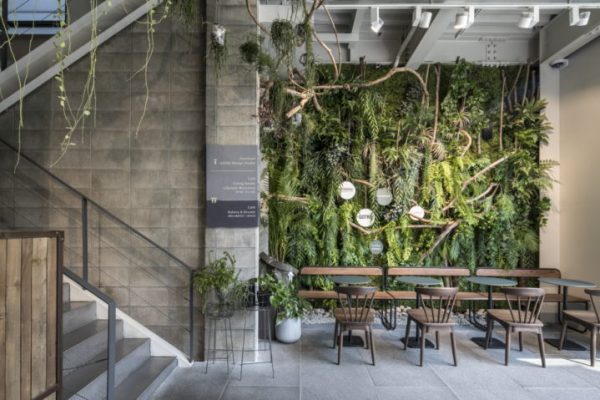
Samara bistro by Mutuus Studio
Architecture practice Mutuus Studio used rustic materials and earth tones to create a “sense of timelessness and comfort” within a Seattle farm-to-table restaurant.
Samara is located in a two-storey, 1920s building in the city’s Sunset Hill district. The eatery is named after a wing-shaped seed pod found on various trees, including elms and maples. The restaurant serves up American cuisine, including local vegetables, fresh seafood, pork and duck. Most dishes are prepared using an oven and grill fuelled by wood.
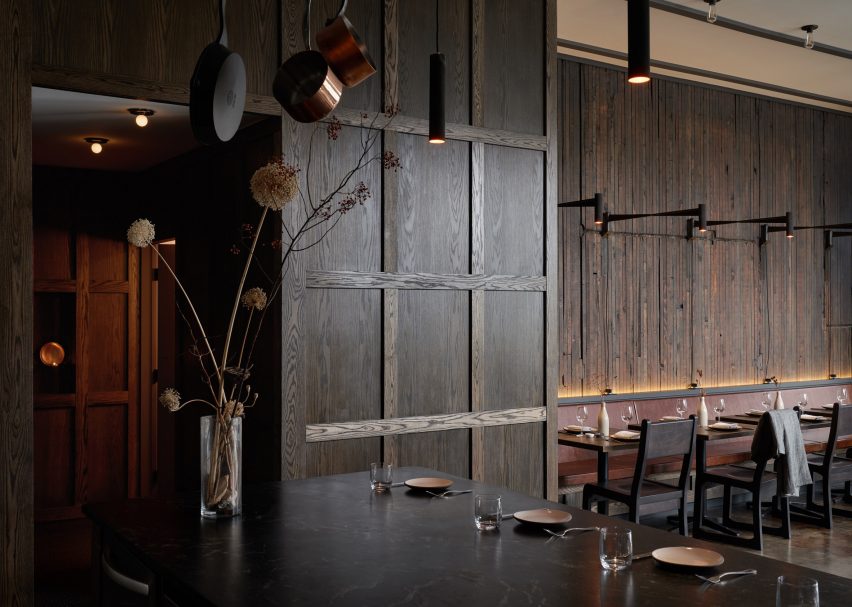
The overall goal for Seattle’s Mutuus Studio was to create a neighbourhood bistro that felt both intimate and sophisticated, and would draw in patrons year-round. Rectangular in plan, the restaurant contains a single dining room and chef’s counter. Situated behind the counter are the wood-fired brick oven and metal grill, offering diners the opportunity to watch their food being prepared.
Throughout the restaurant, the team took inspiration from simple objects that get better with age, such as a basic copper pot. References to nature were also integrated into the design. Earthy materials and colours were used for finishes and decor. A large portion of the space is wrapped in a dark-stained oak panelling and wainscoting – calling to mind a tranquil spot in the woods. The space also features a timber firewall, which was revealed during construction.
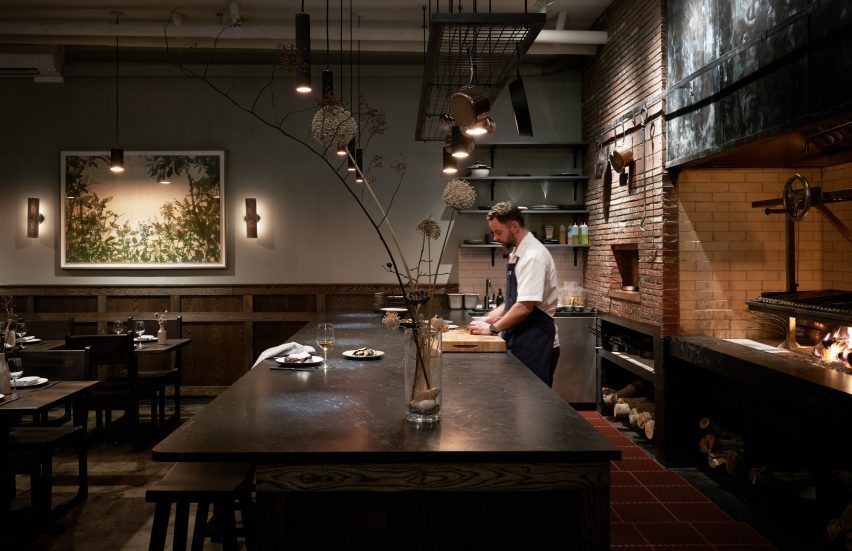
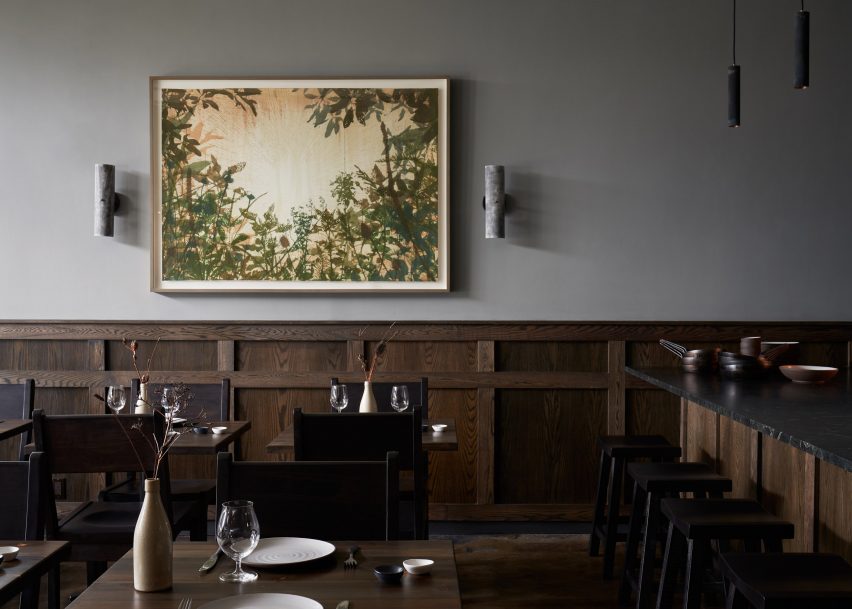
The restaurant can accommodate up to 44 guests through a variety of seating options. Diners can nestle into leather banquettes or sit atop tall stools lining a chef’s counter, which is finished in dark grey soapstone. There also are multiple freestanding tables, which are topped with wood salvaged from old piers.
Illumination is provided by custom lighting fixtures that were designed and fabricated by Mutuus Studio. Suspended above the chef’s counter and kitchen are cylindrical pendants – named Cinder and Ember – made of knurled copper pipe.
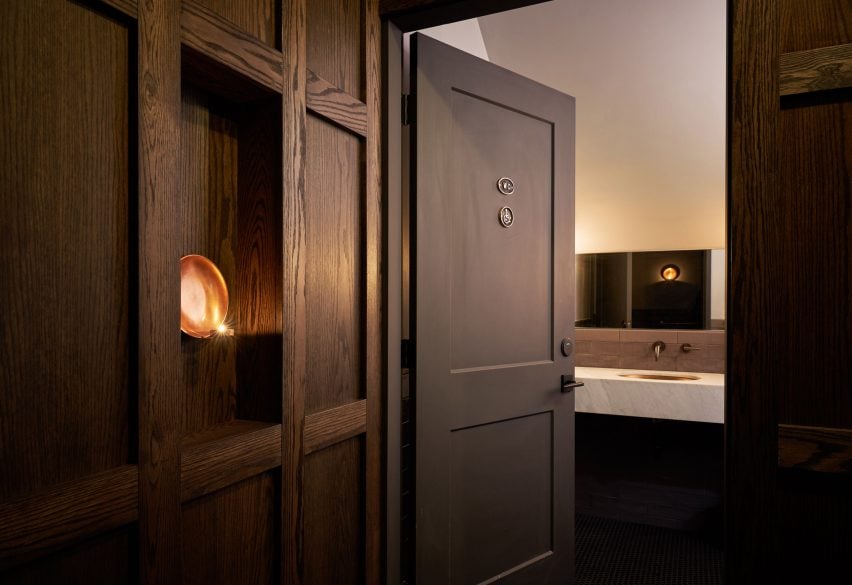
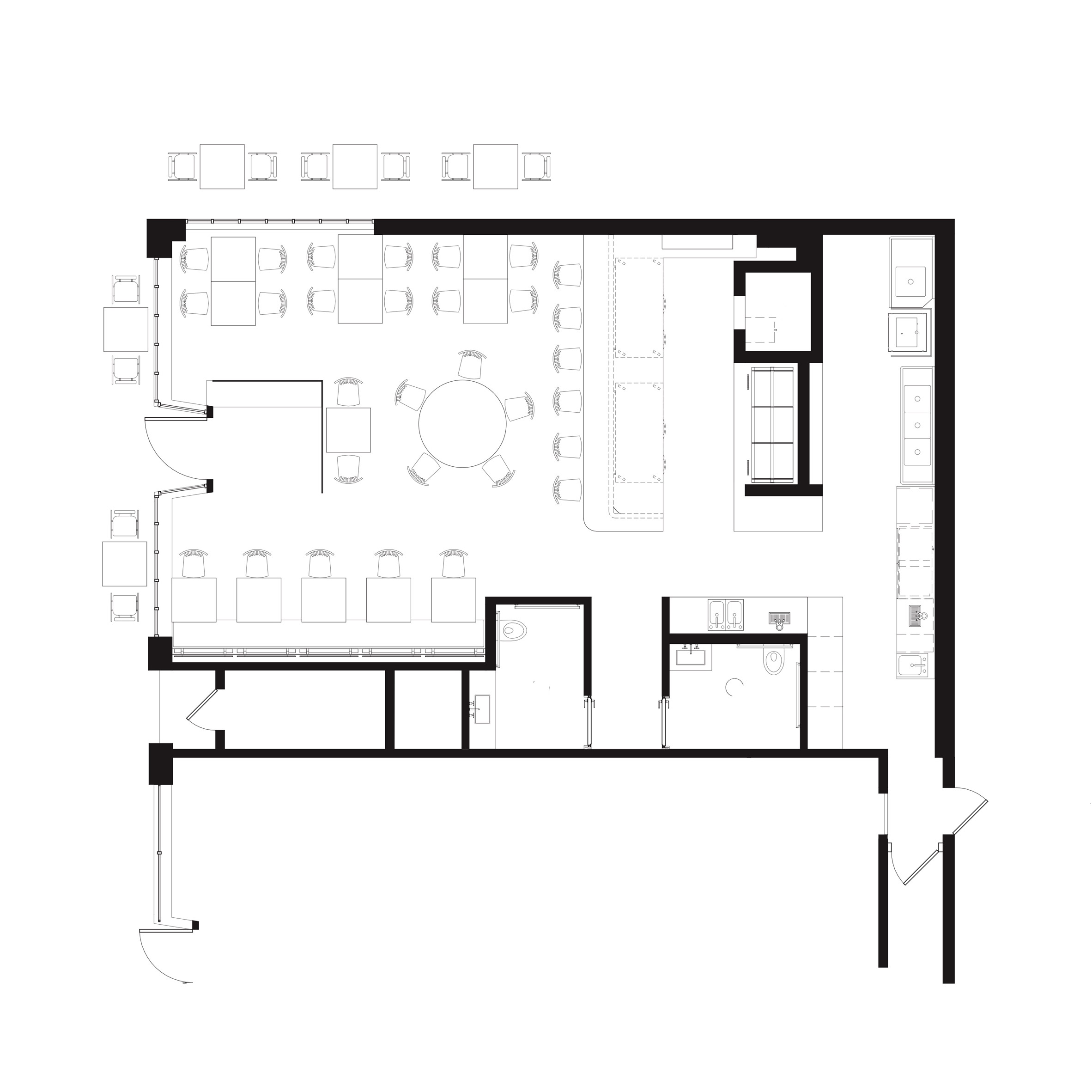
The artificial light is kept at a minimum in the restaurant, helping maintain a comfy atmosphere. Existing concrete floors were lightly stained and then sealed. The space also received new windows and an exterior awning.
This feature was originally published in dezeen.com.

